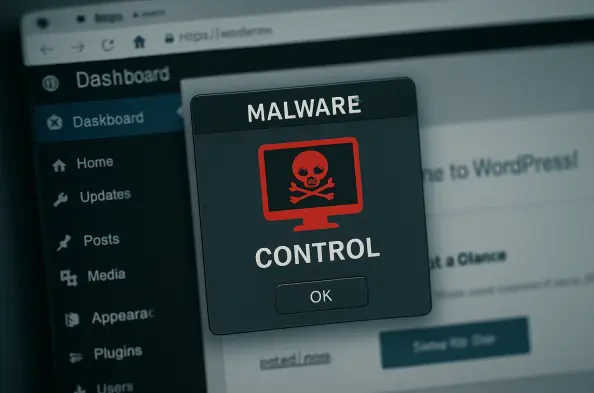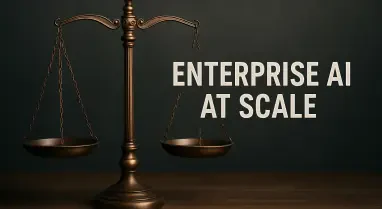WordPress powers millions of websites across the globe, making it an irresistible target for cybercriminals eager to exploit its widespread adoption, and as a leading content management system, it offers immense flexibility. However, this openness also leaves it vulnerable to sophisticated attacks. Hackers have honed their methods to infiltrate these platforms, often deploying malware to seize control over administrative functions with alarming precision. A recent malware campaign sheds light on the stealthy tactics used to compromise WordPress sites, where malicious tools are disguised as legitimate components to evade detection. This not only threatens the security of individual websites but also endangers visitors and facilitates broader criminal activities. Delving into the mechanics of these attacks reveals the cunning strategies employed by threat actors, from deception to persistence, and underscores the urgent need for robust defenses. This exploration aims to unpack how such malware operates and the profound risks it poses to the digital ecosystem.
Unmasking the Art of Deception in Malware Design
In the shadowy realm of cybercrime, deception serves as a cornerstone for infiltrating WordPress sites with malware. Hackers meticulously craft malicious files to resemble trustworthy elements within the platform’s ecosystem, tricking even seasoned administrators into overlooking their presence. A notable example from this campaign involves a fake plugin dubbed “DebugMaster Pro,” strategically placed within the plugins directory, alongside a deceptive script named wp-user.php at the root of the installation. These files are designed with metadata and structures that mimic genuine WordPress components, exploiting the inherent trust placed in familiar tools. The subtlety of this approach means that without a detailed inspection, such intrusions can go unnoticed for extended periods, allowing attackers to operate covertly. This tactic highlights a critical vulnerability in human oversight, as admins may not suspect files that appear benign at first glance, emphasizing the need for deeper scrutiny of all site elements.
The impact of such deceptive tactics extends beyond mere infiltration, as they lay the groundwork for sustained exploitation. By embedding malware that blends seamlessly into the WordPress environment, attackers create a facade of legitimacy that complicates detection efforts. The “DebugMaster Pro” plugin, for instance, not only hides its true nature but also performs actions that align with what a legitimate debugging tool might do, further reducing suspicion. Meanwhile, the wp-user.php script operates under the radar by posing as a core file, a location less likely to be scrutinized by routine checks. This calculated mimicry exploits the complexity of WordPress’s architecture, where numerous files and plugins are commonplace, making it challenging to distinguish friend from foe. As a result, site owners must adopt a mindset of skepticism, questioning the authenticity of every component, no matter how harmless it may seem, to prevent falling victim to these cleverly disguised threats.
Persistence Mechanisms That Defy Removal
A defining feature of this malware campaign is its relentless focus on persistence, ensuring hackers retain access to compromised WordPress sites over the long haul. The “DebugMaster Pro” plugin plays a pivotal role by establishing a hidden administrator account with preset credentials, effectively creating a backdoor for attackers. To avoid detection, it manipulates database queries to conceal itself from the plugin list, rendering it invisible during casual reviews. This stealthy approach means that even vigilant admins might miss the intrusion without specialized tools or in-depth audits. The ability to remain hidden while maintaining an active admin account showcases the malware’s design for longevity, allowing threat actors to return at will. Such persistence transforms a temporary breach into a chronic vulnerability, where control over the site remains firmly in malicious hands unless the root cause is eradicated.
Complementing this stealth is the brute-force persistence of the wp-user.php script, which acts as an unyielding recovery mechanism. This script continuously monitors the site for a designated admin user named “help,” equipped with hardcoded credentials, and reinstates it whenever it is deleted or altered. This means that even if a site owner identifies and removes the suspicious account, the script will recreate it on the next page load or scheduled event, rendering manual interventions futile. This relentless cycle of deletion and recreation underscores the malware’s resilience, designed to outlast basic cleanup efforts. For administrators, this presents a daunting challenge, as simply addressing surface-level symptoms like rogue accounts fails to neutralize the underlying threat. Tackling such persistence requires a comprehensive approach, targeting the malicious files themselves to break the cycle of reinfection and regain full control over the platform.
Obfuscation and Manipulation to Evade Scrutiny
Beyond establishing a foothold, hackers in this campaign leverage obfuscation to shield their malware from both human and automated detection systems. The “DebugMaster Pro” plugin is a prime example, engineered to appear as a legitimate developer tool with convincing metadata and embedded comments that suggest benign intent. This deliberate design preys on psychological oversight, as administrators may dismiss it as a harmless utility during routine checks. Furthermore, the malware’s code is heavily obscured using techniques like Base64 encoding, which scrambles its true purpose and hinders signature-based security scanners from flagging it as a threat. This dual strategy of visual deception and technical evasion creates a formidable barrier to identification, allowing the malware to operate undetected for extended periods and amplifying the difficulty of mounting an effective response.
Social engineering also plays a critical role in the malware’s ability to remain hidden, exploiting the trust inherent in familiar systems. By mimicking the structure and naming conventions of legitimate WordPress components, the malicious files capitalize on the assumption that well-known elements are safe. The wp-user.php script, for instance, resides in a location typically associated with core files, a spot less likely to draw attention during standard security sweeps. This calculated placement, combined with obfuscated code that resists automated analysis, forms a robust defense against discovery. For site owners, this underscores the limitations of traditional security tools, which often rely on recognizable patterns to identify threats. Combating such evasion demands advanced detection methods, such as behavioral analysis, alongside a heightened awareness of how attackers manipulate perceptions to bypass scrutiny and maintain their grip on compromised platforms.
Expanding Threats Through Malicious Capabilities
Once administrative control is secured, the malware reveals its broader destructive potential, extending the threat beyond the compromised WordPress site. The “DebugMaster Pro” plugin injects malicious JavaScript into visitor-facing pages, carefully excluding administrators and whitelisted IP addresses to avoid arousing suspicion. This enables a range of harmful activities, from redirecting traffic to dubious domains to distributing spam or harvesting sensitive user data. Such actions transform the site into a weaponized platform, endangering unsuspecting visitors and potentially implicating the site owner in wider criminal schemes. The ability to manipulate user interactions without immediate detection highlights the malware’s sophisticated design, as it prioritizes stealth while maximizing its impact on a broader audience, turning a single breach into a gateway for extensive cybercrime.
Additionally, the malware’s capabilities include reconnaissance that further empowers attackers with critical insights. It logs administrator IP addresses, either storing them locally for later retrieval or transmitting them to a remote command-and-control server for real-time analysis. This data collection aids in planning subsequent attacks or tailoring strategies to specific targets, enhancing the threat actors’ effectiveness. The multifaceted nature of these activities—ranging from direct exploitation to intelligence gathering—demonstrates how a compromised site becomes a hub for diverse malicious operations. For site administrators, this serves as a stark reminder that the consequences of such breaches ripple outward, affecting not just internal security but also the safety of every individual who interacts with the platform. Addressing these risks requires a proactive stance, focusing on both prevention and rapid response to mitigate the extensive damage potential.
Strengthening Defenses Against Evolving Threats
Reflecting on this malware campaign, it’s evident that hackers demonstrated remarkable cunning in their efforts to dominate WordPress sites through persistent and deceptive tactics. Their use of disguised files and relentless recovery mechanisms showcased a deep understanding of the platform’s vulnerabilities. The dual approach of stealth and brute-force persistence, coupled with obfuscation, proved challenging to counter with conventional methods. In response, site administrators must prioritize comprehensive audits of plugins and core files to uncover hidden threats. Implementing file integrity monitoring becomes a key step to detect unauthorized changes swiftly. Moreover, enforcing strict reviews of admin accounts helps identify rogue users created by malware. These actions, taken in the aftermath, aim to dismantle the intricate web of control spun by attackers and restore security to compromised systems.
Looking ahead, fortifying WordPress sites against such sophisticated threats demands a shift toward proactive and layered security measures. Adopting advanced detection tools that focus on behavioral anomalies rather than just known signatures can help uncover obfuscated malware. Regular updates to the platform, themes, and plugins should be standard practice to patch known vulnerabilities before exploitation occurs. Additionally, educating administrators about the psychological tactics used in social engineering can reduce the likelihood of overlooking deceptive files. Investing in automated backups and recovery plans ensures that sites can be restored quickly if a breach occurs. By staying ahead of evolving cyber tactics through vigilance and modern solutions, site owners can better safeguard their platforms and protect visitors from the far-reaching consequences of malware-driven attacks.






